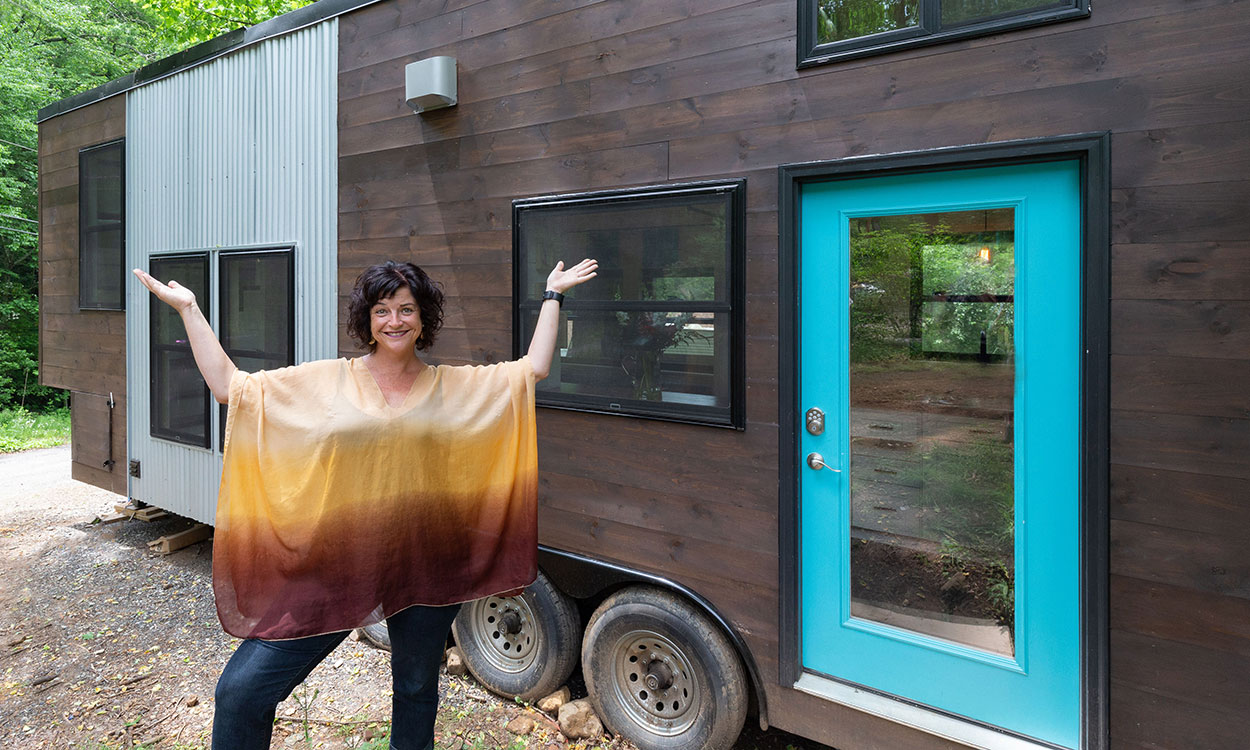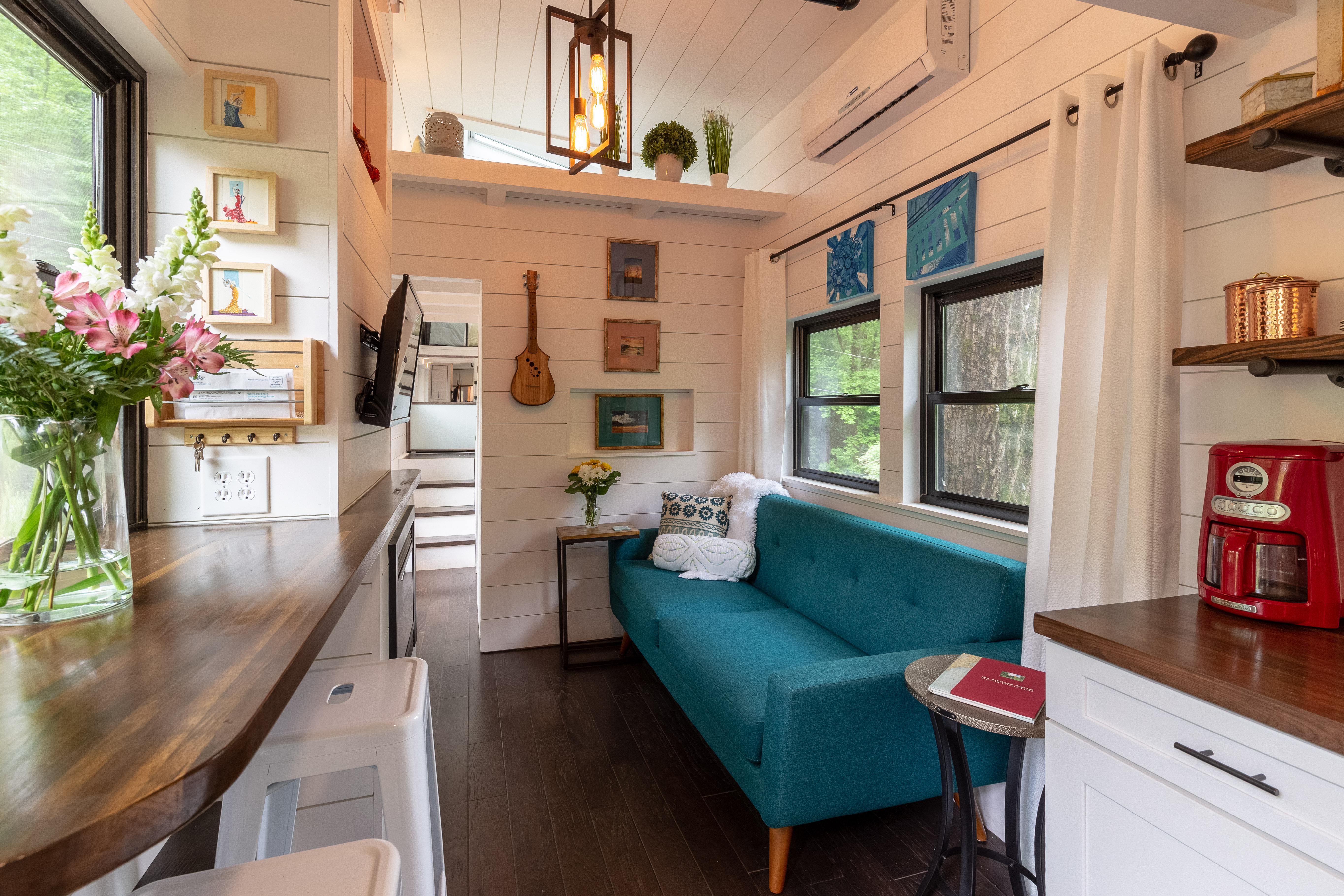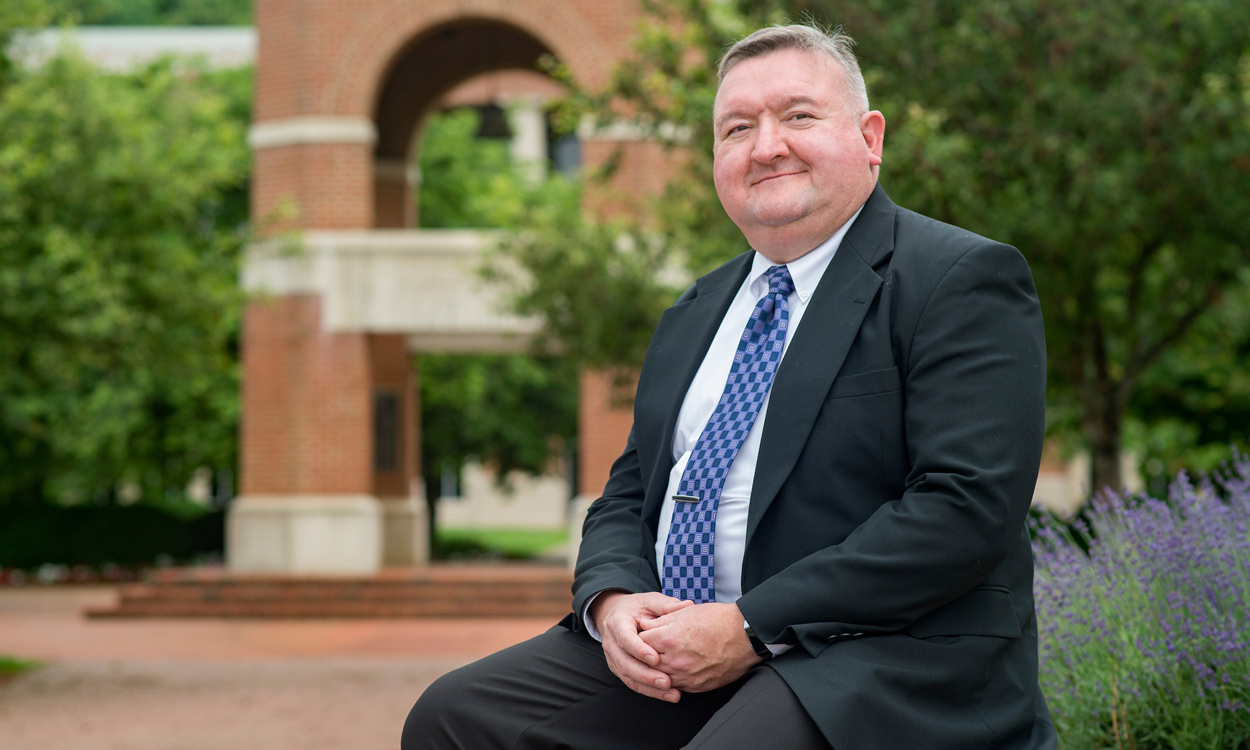Interior design program coordinator uses tiny house as teaching tool

Erin Adams custom-designed her tiny house that is parked alongside the Tuckaseigee River. (Photo courtesy of Matthew Turlington Photography)
Erin Adams used to have aspirations about moving into a tiny house, and she had big dreams of what she wanted her small-scale abode to be like.
Now, three years later, Adams is getting ready to move into her new 265-square-feet of space on the Tuckaseigee River, and she’s also the recipient of an international award for its sustainable interior design.
Adams, associate professor and coordinator of Western Carolina University’s interior design program, has been a practicing interior designer for more than two decades. In the classroom, she constantly urges her students to create interiors in a socially responsible way and to educate their clients about sustainable building options. “I explain to them that bigger does not always mean better design and that not everyone needs to live in a 3,000-square-foot home,” Adams said.
“Several years ago, I had been toying with the idea of designing and building a custom tiny home for my permanent residence and mentioned it to my students in my ‘Interior Design 255: Space Planning’ class. They were quite intrigued by the idea of designing within such a small space. What better way to hone their space planning skills than to have them design a tiny home, where every single square inch of design matters?”
Adams proceeded to become a difficult client for her class, requesting that they design a tiny house with all the amenities she enjoyed in the 1,100-square-foot home where she already lived, including a standard-sized refrigerator, bathtub, sofa, flush toilet, closet and washer and dryer; a fireplace; and guest sleeping loft to fit a king-size bed. “Lastly, I asked them to include a master suite that offered a dressing vanity and a master bed that I didn’t have to climb up a steep ladder to access and crawl on my hands and knees into, as is quite standard in tiny homes on wheels,” she said.
In the end, the students were unable to provide all those amenities in their design solutions. “The students told me that there was absolutely no way that a design could be created to accomplish my laundry list of needs,” Adams said. “It was at that point that I decided to put my money where my mouth was and show them that it could be done. I set out researching tiny home layouts on the market and found that not a single existing layout offered even a portion of the items I wanted in my tiny home. It became obvious that I would need to design and build a tiny home from scratch.”

The interior that Adams designed for her tiny house won a second-place honor from the International Design Awards in the "green living/sustainable design" category. (Photo courtesy of Matthew Turlington Photography)
Adams came up with an interior plan for her tiny house over the following year, and then it took one year to build. “Although my contractor, Ricky Wright of the company Wright on the Level, had never built a tiny home on wheels before, he was up for the challenge,” she said. “He worked nights and weekends and built my tiny home in his front yard in Sylva.”
Christened the “Luminaire Tiny House” because of its 14 windows, Adams entered her new quarters in the International Design Awards, a competition established in 2007 to recognize exemplary work in interior design as well as architectural, graphic, fashion and product design. She received notice recently that her interior design tied for second place with a boutique hotel in China in the “green living/sustainable design” category of the competition.
Adams’ dream home is now sitting on a piece of land adjacent to the Tuckaseigee River, and she plans to move into it full time as soon as the infrastructure work is done. She said designing a tiny house presented a number of challenges that she had never faced as an interior designer, including size limitations for it to be road-legal and a weight limit to allow the house to be pulled by a big pickup truck.
Adams said she has tried to use her tiny house as a teaching tool throughout the process. She frequently took her students to the construction site to illustrate proper plumbing layout, electrical requirements and framing methodologies. She also has provided tours for the general public “to show people that full-time tiny house living is a viable sustainable housing option and that you don’t have to give up the comforts found in traditional housing.”
So far, more than 600 people have toured the Luminaire and “were quite surprised to see that my tiny home is spacious, beautiful, functional and sustainable…and mortgage-free to boot,” Adams said.
For more information, contact Adams at eeadams@wcu.edu.

